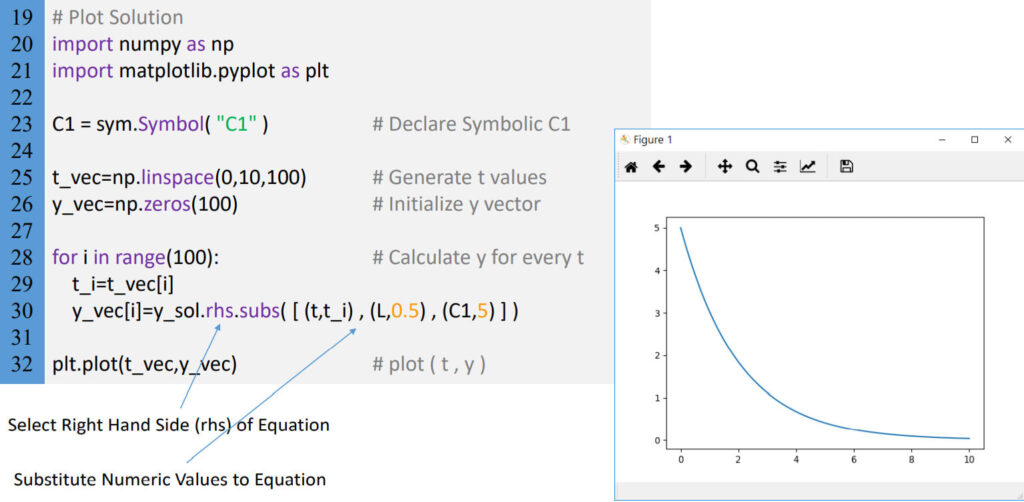Mastering Engineering Calculations with Python: A Comprehensive Guide

Introduction: Python, a versatile and powerful programming language, has gained widespread popularity among engineers for its simplicity, flexibility, and extensive library ecosystem. From numerical computations and data analysis to simulation and visualization, Python offers a wide range of tools and libraries tailored to the needs of engineering professionals. In this extensive guide, we’ll explore how to harness the capabilities of Python for engineering calculations, covering everything from basic arithmetic operations to advanced numerical methods and scientific computing techniques.
Section 1: Getting Started with Python for Engineering 1.1 Installing Python and Setting up the Development Environment: Before you can start using Python for engineering calculations, you’ll need to install Python on your computer and set up the development environment. Python is available for Windows, macOS, and Linux platforms and can be downloaded from the official Python website. Additionally, you can choose from various integrated development environments (IDEs) such as PyCharm, Spyder, or Jupyter Notebook to write and execute Python code efficiently.
1.2 Introduction to Python Basics: Familiarize yourself with the basics of Python programming, including data types, variables, operators, control structures, functions, and modules. Python’s simple and intuitive syntax makes it easy to learn and use, even for beginners with little programming experience. Practice writing Python scripts to perform simple tasks such as arithmetic operations, string manipulation, and conditional statements to gain proficiency in the language.
Section 2: Numerical Computations and Data Analysis 2.1 Using NumPy for Numerical Computations: NumPy is a fundamental library for numerical computing in Python, providing support for multi-dimensional arrays, linear algebra, Fourier transforms, and random number generation. Learn how to import NumPy and perform basic numerical computations such as addition, subtraction, multiplication, and division using NumPy arrays. Explore NumPy’s extensive collection of mathematical functions for trigonometry, logarithms, exponentials, and more to perform complex engineering calculations efficiently.
2.2 Analyzing Data with Pandas: Pandas is a powerful library for data manipulation and analysis in Python, particularly useful for engineers working with large datasets. Learn how to import data into Pandas DataFrames from various sources such as CSV files, Excel spreadsheets, SQL databases, and web APIs. Explore Pandas’ data manipulation capabilities, including filtering, sorting, grouping, and aggregation, to extract insights and perform statistical analysis on engineering data.
Section 3: Simulation and Modeling 3.1 Solving Differential Equations with SciPy: SciPy is a comprehensive library for scientific computing in Python, providing functions for optimization, interpolation, integration, and solving ordinary and partial differential equations. Learn how to use SciPy’s odeint function to solve ordinary differential equations (ODEs) representing dynamic systems in engineering. Explore applications such as mechanical vibrations, electrical circuits, and chemical kinetics by modeling and simulating systems using SciPy.
3.2 Simulating Engineering Systems with SimPy: SimPy is a discrete-event simulation library for Python, suitable for modeling and simulating complex systems with interacting components. Learn how to define simulation processes, events, and resources using SimPy’s simulation environment. Explore applications such as queuing systems, manufacturing processes, and traffic networks by building simulation models in Python and analyzing their behavior using statistical measures and visualization techniques.
Section 4: Visualization and Plotting 4.1 Creating Plots with Matplotlib: Matplotlib is a versatile plotting library for Python, capable of producing a wide range of static, interactive, and publication-quality plots and visualizations. Learn how to use Matplotlib’s pyplot interface to create line plots, scatter plots, bar plots, histograms, and heatmaps to visualize engineering data effectively. Customize plot aesthetics such as colors, markers, labels, titles, and legends to convey information clearly and concisely.
4.2 Interactive Visualization with Plotly and Bokeh: Plotly and Bokeh are interactive visualization libraries for Python, suitable for creating interactive plots, dashboards, and web applications. Learn how to use Plotly’s expressive syntax and Bokeh’s powerful widgets to create interactive plots with zooming, panning, tooltips, and hover effects. Explore applications such as real-time data monitoring, interactive simulations, and collaborative data exploration by incorporating Plotly and Bokeh into your engineering projects.
Section 5: Optimization and Machine Learning 5.1 Optimizing Engineering Systems with Scipy.optimize: Scipy.optimize is a subpackage of SciPy dedicated to optimization algorithms and techniques for solving optimization problems in engineering. Learn how to use Scipy.optimize’s optimization functions to minimize or maximize objective functions subject to constraints. Explore applications such as parameter estimation, system identification, and design optimization by formulating and solving optimization problems using Scipy.optimize.
5.2 Applying Machine Learning for Engineering Tasks: Machine learning is increasingly used in engineering for pattern recognition, classification, regression, and predictive modeling tasks. Learn how to apply machine learning algorithms and techniques using libraries such as Scikit-learn and TensorFlow to analyze engineering data and make data-driven decisions. Explore applications such as predictive maintenance, fault detection, and system identification by training machine learning models on engineering datasets and evaluating their performance.
Conclusion: Python is a versatile and powerful tool for engineering calculations, offering a rich ecosystem of libraries and tools tailored to the needs of engineers and scientists. By mastering Python for engineering, you can streamline your workflow, solve complex engineering problems, and gain insights from data more effectively. Whether you’re analyzing data, simulating systems, visualizing results, or optimizing designs, Python provides the tools you need to succeed in your engineering projects. With practice, experimentation, and continuous learning, you can become proficient in using Python for engineering calculations and unlock its full potential for innovation and discovery in engineering.




